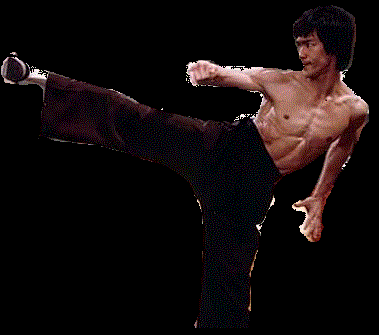Bushido
Bushidō (武士道), literally "the way of the warrior", is a Japanese word for the way of the samurai life, loosely analogous to the concept of chivalry. It originates from the samurai moral code stressing frugality, loyalty, martial arts mastery, and honor unto death. Born from Neo-Confucianism during times of peace in Tokugawa Japan and following Confucian texts, Bushido was also influenced by Shinto and Zen Buddhism, allowing the violent existence of the samurai to be tempered by wisdom and serenity. Bushidō developed between the 9th and 20th centuries and numerous translated documents dating from the 12th to 16th centuries demonstrate its wide influence across the whole of Japan, although some scholars have noted "the term bushidō itself is rarely attested in premodern literature."
Under the Tokugawa Shogunate, aspects of bushidō became formalized into Japanese feudal law.
According to the Japanese dictionary Shogakukan Kokugo Daijiten, "Bushidō is defined as a unique philosophy (ronri) that spread through the warrior class from the Muromachi (chusei) period."
The word was first used in Japan during the 17th century. It came into common usage in Japan and the West after the 1899 publication of Nitobe Inazō's Bushido: The Soul of Japan.
In Bushido (1899), Inazō wrote:
...Bushidō, then, is the code of moral principles which the samurai were required or instructed to observe.... More frequently it is a code unuttered and unwritten.... It was an organic growth of decades and centuries of military career.
Nitobe was not the first person to document Japanese chivalry in this way. In his text Feudal and Modern Japan (1896), historian Arthur May Knapp wrote: The samurai of thirty years ago had behind him a thousand years of training in the law of honor, obedience, duty, and self-sacrifice.... It was not needed to create or establish them. As a child he had but to be instructed, as indeed he was from his earliest years, in the etiquette of self-immolation.
Early history to 12th century:
The Kojiki is Japan's oldest extant book. Written in 721, it contains passages about Yamato Takeru, the son of the Emperor Keiko. It provides an early indication of the values and literary self-image of the Bushidō ideal, including references to the use and admiration of the sword by Japanese warriors.
This early concept is further found in the Shoku Nihongi, an early history of Japan written in 797. The chapter covering the year 721 is notable for an early use of the term "bushi" (武士) and a reference to the educated warrior-poet ideal. The Chinese term bushi had entered the Japanese vocabulary with the general introduction of Chinese literature, supplementing the indigenous terms tsuwamono and mononofu. It is also the usage for public placement exams.
An early reference to saburau — a verb meaning to wait upon or accompany a person of high rank — appears in Kokin Wakashū, the first imperial anthology of poems, (early 10th century). By the end of the 12th century, saburai ("retainer") had become largely synonymous with bushi, and closely associated with the middle and upper echelons of the warrior class.
Although many of the early literary works of Japan contain the image of the warrior, the term "bushidō" does not appear in early texts like the Kojiki. Warrior ideals and conduct may be illustrated, but the term did not appear in text until the Sengoku period, towards the end of the Muromachi era (1336–1573).
13th to 16th centuries:
From the literature of the 13th to 16th centuries, there exists an abundance of references to the ideals of Bushidō. Carl Steenstrup noted that 13th and 14th century writings (gunki monogatari) "portrayed the bushi in their natural element, war, eulogizing such virtues as reckless bravery, fierce family pride, and selfless, at times senseless devotion of master and man."
Compiled in 1371, the Heike Monogatari chronicles the struggle between the Minamoto and Taira clans for control of Japan at the end of the 12th century—a conflict known as the Gempei War. Clearly depicted throughout the Heike Monogatari is the ideal of the cultivated warrior. The warriors in the Heike Monogatari served as models for the educated warriors of later generations, and the ideals depicted by them were not assumed to be beyond reach. Rather, these ideals were vigorously pursued in the upper echelons of warrior society and recommended as the proper form of the Japanese man of arms. By the time of Imagawa Ryoshun's "Regulations" at the beginning of the 15th century, the Bushidō ideal was fairly clear, and the term itself came into widespread use.




